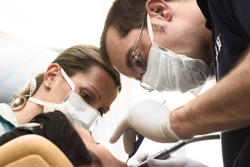High quality biomedical titanium castings
A European consortium was created comprising experts in the field of ceramics, metallurgy, foundry technology and biocompatibility. Their aim was to develop a cost-efficient method for producing high quality titanium castings for biological applications. These are mainly dental fittings, but also include other biomedical products such as trachea pipes and maxillo-implants. The use of Ti and Ti alloys has begun to replace gold in the medical and dental fields, particularly in Japan and the USA. The application of Ti is set to increase even further as the European population ages. Moreover, oral cast titanium products are expected to be much cheaper than using gold. Work was undertaken by CATIPRO involving casting preparation procedures for the application of dental porcelain. Results showed that surface roughness was significantly dependent on the grain size and applied pressure during sandblasting, although it was unaffected by the incident angle. The surface roughness of Ti casting could be increased by a number of factors. These included increasing the average size of the alumina grains and raising the velocity of the particles by increasing the pressure of the sandblasting machine. A study was also undertaken to improve the parameters for casting and to detect the origin of defects during this period. It was concluded that defects such as lack of filling and dimensional errors were a result of bad design for the feeding process. This was most important for machines where the filling and solidification process is by differential pressure, compared to those which used centrifugation.







